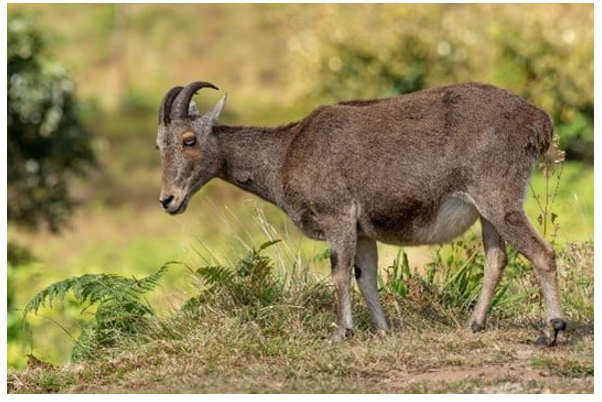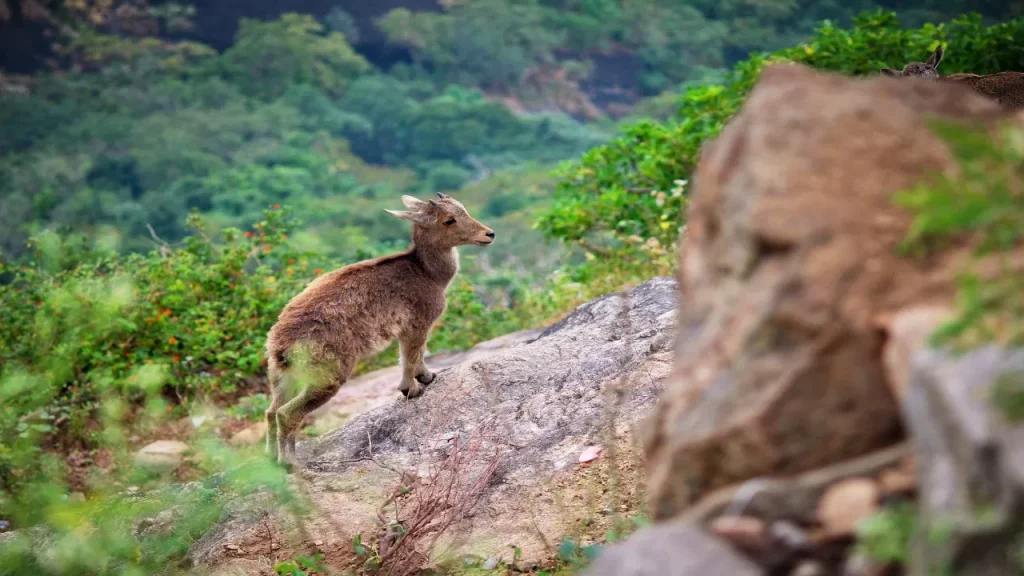SYLLABUS
GS-3: Environment conservation
Context:
Recently, Kerala and Tamil Nadu conducted a joint census of the Niligiri Tahr population.
More on the News
The Minister for Forests and Wildlife Protection released the census report at Thiruvananthapuram during the 50th anniversary of the establishment of Eravikulam National Park in Munnar.
The joint population estimation of Nilgiri tahrs was conducted continuously for four days in 89 census blocks in Kerala and 182 census blocks in Tamil Nadu.
The adoption of standardised methods like the ‘Bounded Count’ and ‘Double Observer’ techniques enhanced the accuracy and reliability of data collected during the tahr survey.
- Bounded Count” refers to a method that estimates population numbers within defined upper and lower limits, while “Double Observer” is used to assess animal abundance and detection probability by involving two independent observers during ecological surveys.
The Population Estimation 2025 aimed to explore historically known areas and gather information on fragmented tahr populations as well as the potential for re-establishing habitat connectivity to restore these populations.
Key highlights of the joint census
The joint census has reported a population of 2,668 Nilgiri tahrs.
According to Forest department officials, 1,365 tahrs belong to Kerala and 1,303 to Tamil Nadu.
The Eravikulam National Park (ENP) is home to the largest contiguous population of Nilgiri tahr in Kerala, numbering 841.
Around 90% of Kerala’s tahr population is in the Munnar landscape.
Major populations in Tamil Nadu are in:
- Mukurthi National Park
- Grass Hills National Park
Nilgiri Tahr (Nilgiritragus hylocrius)
It is an endangered mountain ungulate (hoofed mammal) that is endemic to the southern Western Ghats of India, primarily found in Kerala and Tamil Nadu.
Endemic Range: Confined to the southern Western Ghats in Kerala and Tamil Nadu.
Physical Traits:

- Short, coarse fur and a bristly mane
- Males: Dark brown with blackish tone
- females and young ones: Greyish
- Both sexes have backward-curving horns, males develop a saddle-shaped grey patch on the back
Key Habitat: It is mainly found in montane shola-grassland ecosystems; Eravikulam National Park holds the highest density.
Ecological Role: Referred to as “mountain guardians” due to their role in maintaining alpine grassland ecosystems.
Species Uniqueness: It is the only mountain ungulate in southern India among 12 species found in the country.
Conservation Status:
- IUCN Red List: Endangered
- Wildlife Protection Act, 1972: Schedule I
State Animal: It is the state animal of Tamil Nadu.
Social Behaviour: It lives in herds dominated by adult females and their offspring.


